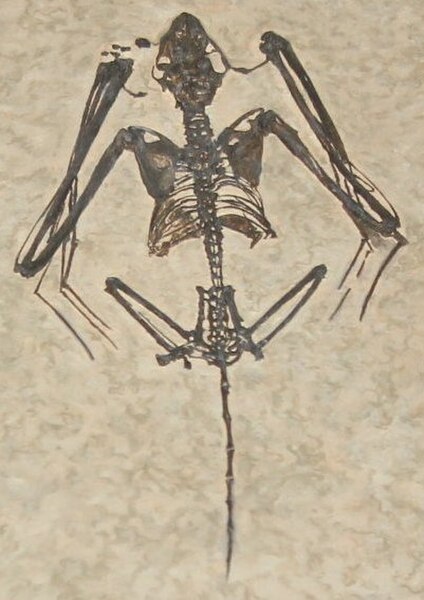The Yinpterochiroptera is a suborder of the Chiroptera, which includes taxa formerly known as megabats and five of the microbat families: Rhinopomatidae, Rhinolophidae, Hipposideridae, Craseonycteridae, and Megadermatidae. This suborder is primarily based on molecular genetics data. This proposal challenged the traditional view that megabats and microbats form monophyletic groups of bats. Further studies are being conducted, using both molecular and morphological cladistic methodology, to assess its merit.
Yinpterochiroptera
Bats are flying mammals of the order Chiroptera. With their forelimbs adapted as wings, they are the only mammals capable of true and sustained flight. Bats are more agile in flight than most birds, flying with their very long spread-out digits covered with a thin membrane or patagium. The smallest bat, and arguably the smallest extant mammal, is Kitti's hog-nosed bat, which is 29–34 millimetres in length, 150 mm (6 in) across the wings and 2–2.6 g in mass. The largest bats are the flying foxes, with the giant golden-crowned flying fox reaching a weight of 1.6 kg and having a wingspan of 1.7 m.
Bat
The early Eocene fossil microchiropteran Icaronycteris, from the Green River Formation
Giant golden-crowned flying fox, Acerodon jubatus
"Chiroptera" from Ernst Haeckel's Kunstformen der Natur, 1904




